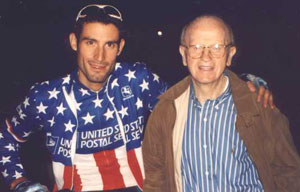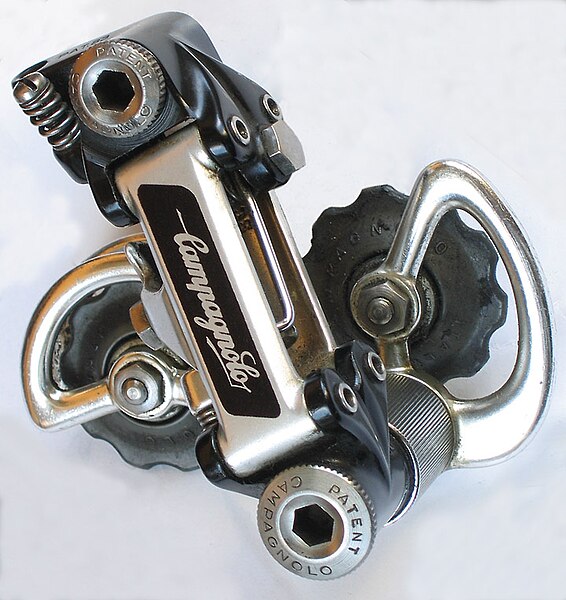Whenever I ride along the Brooklyn waterfront--especially in Red Hook or near Bush Terminal--I can shed a tear or two as I'm opening my wings. At least, that's how it feels sometimes. It's the joy of victory twinged with a little bit of sadness and guilt.
The views along those stretches of New York Harbor are always awe-inspiring, and not only because of the Statue of Liberty or the lower Manhattan skyline. No matter how many towers are built along the shorelines, they are exactly that: shorelines, which means that they can never fit into a grid pattern; they can only disrupt or stop it. And whoever or whatever comes or goes, lives go on.
For that is what those waterfronts have always represented to me: lives. Sure, the promenades and picnic fields built over the old piers are pleasant places to walk one's dog or hang out with friends and loved ones--or to bicycle. But nearly anyone who goes to the waterfront now has never worked on the docks, on the piers. Those who work in the concession stands or clean the paths or fields don't work on the waterfront; they work for companies in faraway places that contract with the city's Parks Department.
That is not to say they don't work hard (for low pay). But their work enables the leisure of others, nearly none of whom will they ever get to know. Those who worked on the docks and in the nearby factories were working for and with other people who worked: the people they saw all day, and sometimes at the end of the day. They ate, drank, played ball and attended each other's (and their families') important life events. It's hard to imagine the person making lattes in the snack bar going to the bachelorette party of someone who power-walks or takes an outdoor yoga class along the promenade.
It's still a little strange for me to be one of those people who goes to the waterfront for recreation or fitness--in my case, to ride a bicycle--after it was a place of work, and more work, for various members of my family, most of them gone now. For that matter, the jobs or even the very work they did no longer exist: the plant where one of my uncles made cement, the shoe factory where my mother and grandmother stitched and the old docks where two of my uncles were longshoremen--a job rendered obsolete by cranes, container ships and interstate highways.
To be sure, their work was difficult, draining and sometimes dangerous. The pay was decent--at least for my uncles--but, really, it did not justify the risks to themselves they were expected to take. Nobody should have to work under those conditions, or those my mother and grandmother endured. But, at the same time, those jobs allowed people who couldn't, for whatever reasons, spend lots of time in school to make lives for themselves and, in time, to support families. I don't think the man grilling hot dogs in the concessionaire can do that on his pay.
He, and his co-workers are probably working other jobs. And they don't have much time, or energy, for the sorts of things we do now when we visit the pier. If he has a bike, he's probably riding it to the job and back, but not along this pier. I'll bet he, and the woman making lattes, didn't get to see the "rainbow cloud" to the right of the Statue.
At the end of the day, they probably want to flop into a couch or bed. I am more privileged: In the middle of a ride after work, I can enjoy the whimsy of something like this:
I imagine that the artist who created it was one of the people who, like me, cycled (or strolled or ran) along the promenade, or some path like it in his home town. So we might say the waterfront is a place of recreation for him. Then again, he created a public sculpture that is exhibited on the pier. He is an artist; that is his his work. Or is it play--recreation--for him?
I hope it's everything. Then I will feel nothing but pleasure about it, and about having the time to ride by and see it.
The views along those stretches of New York Harbor are always awe-inspiring, and not only because of the Statue of Liberty or the lower Manhattan skyline. No matter how many towers are built along the shorelines, they are exactly that: shorelines, which means that they can never fit into a grid pattern; they can only disrupt or stop it. And whoever or whatever comes or goes, lives go on.
For that is what those waterfronts have always represented to me: lives. Sure, the promenades and picnic fields built over the old piers are pleasant places to walk one's dog or hang out with friends and loved ones--or to bicycle. But nearly anyone who goes to the waterfront now has never worked on the docks, on the piers. Those who work in the concession stands or clean the paths or fields don't work on the waterfront; they work for companies in faraway places that contract with the city's Parks Department.
That is not to say they don't work hard (for low pay). But their work enables the leisure of others, nearly none of whom will they ever get to know. Those who worked on the docks and in the nearby factories were working for and with other people who worked: the people they saw all day, and sometimes at the end of the day. They ate, drank, played ball and attended each other's (and their families') important life events. It's hard to imagine the person making lattes in the snack bar going to the bachelorette party of someone who power-walks or takes an outdoor yoga class along the promenade.
It's still a little strange for me to be one of those people who goes to the waterfront for recreation or fitness--in my case, to ride a bicycle--after it was a place of work, and more work, for various members of my family, most of them gone now. For that matter, the jobs or even the very work they did no longer exist: the plant where one of my uncles made cement, the shoe factory where my mother and grandmother stitched and the old docks where two of my uncles were longshoremen--a job rendered obsolete by cranes, container ships and interstate highways.
To be sure, their work was difficult, draining and sometimes dangerous. The pay was decent--at least for my uncles--but, really, it did not justify the risks to themselves they were expected to take. Nobody should have to work under those conditions, or those my mother and grandmother endured. But, at the same time, those jobs allowed people who couldn't, for whatever reasons, spend lots of time in school to make lives for themselves and, in time, to support families. I don't think the man grilling hot dogs in the concessionaire can do that on his pay.
He, and his co-workers are probably working other jobs. And they don't have much time, or energy, for the sorts of things we do now when we visit the pier. If he has a bike, he's probably riding it to the job and back, but not along this pier. I'll bet he, and the woman making lattes, didn't get to see the "rainbow cloud" to the right of the Statue.
At the end of the day, they probably want to flop into a couch or bed. I am more privileged: In the middle of a ride after work, I can enjoy the whimsy of something like this:
I imagine that the artist who created it was one of the people who, like me, cycled (or strolled or ran) along the promenade, or some path like it in his home town. So we might say the waterfront is a place of recreation for him. Then again, he created a public sculpture that is exhibited on the pier. He is an artist; that is his his work. Or is it play--recreation--for him?
I hope it's everything. Then I will feel nothing but pleasure about it, and about having the time to ride by and see it.






